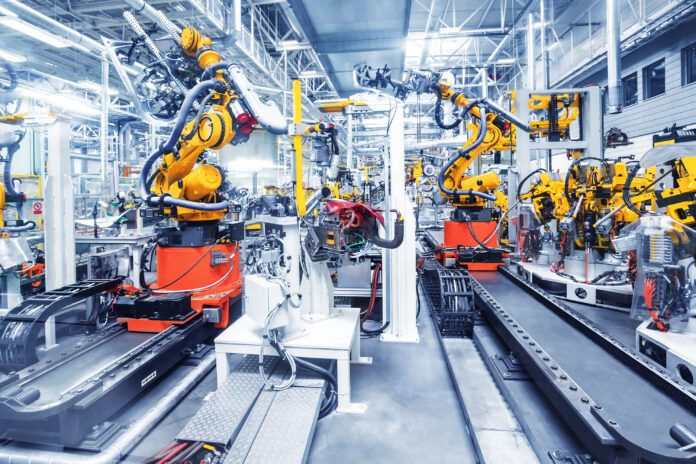
Article by David van Rensburg, Product Manager: Manufacturing, SYSPRO
Today’s end consumers demand quality, and they are quick to try a competitive product when disappointment hits. For manufacturers, the quest to achieve less variability, more consistency and enhanced customer satisfaction has never been more critical.
To consistently produce high-quality products, the key is to improve standards of quality control throughout the manufacturing process, and that requires an effective quality management system with the ability to oversee all activities and tasks that must be accomplished to maintain the desired level of excellence. Such a system helps manufacturers identify potential issues and rectify them before they escalate, leading to improved customer relationships and company growth as well as greater productivity and cost efficiencies.
At a high level, there are five main factors driving manufacturers’ need for quality management.
Customer retention
Given that it can cost up to five times more to acquire new customers than to retain existing ones, customer retention is a top priority. Ensuring high-quality standards and delivering consistent standards go a long way towards keeping existing customers. There’s no doubt that the ability to ensure high product quality and meet customer expectations significantly contributes to customer satisfaction and loyalty.
Cost of poor quality
The second key driver is the overall cost of poor quality that eats away at profit margins. Studies suggest that the overall cost of poor quality can range from five per cent to 30 per cent of a company’s total sales revenue, highlighting the financial impact of poor quality. In today’s environment of ongoing supply chain disruptions and an impending recession, businesses simply cannot afford to lose revenue.
Compliance
Next up is compliance. For manufacturers, this entails complying with the ISO 9001 standard, a management system that helps embed quality management practices into processes. ISO 9001 helps companies improve quality throughout the operation from development and material sourcing right through to product delivery and customer interaction.
Product recalls
A product recall is something manufacturers try to avoid at all costs. Statistics show that 25 per cent of consumers reported being less likely to buy products from a company involved in a recall and 65 per cent of consumers said they would be less likely to recommend a company following a recall. Clearly, all efforts in quality must work towards preventing this. If worst comes to worst, an efficient system is needed to make the process of recalling a product fast and accurate to minimise any negative results.
Continuous improvement
Continuous improvement is a systematic approach to consistently enhance processes, products and services over time. It involves making incremental and sustainable changes to achieve higher efficiency, effectiveness and quality. By fostering a culture of continuous improvement, businesses encourage employees at all levels to identify problems, suggest solutions and implement small-scale changes to optimize operations. This iterative process helps organisations adapt to changing market conditions, innovate and maintain a competitive edge.
Making quality management work
One of the most effective ways of getting quality management right is by implementing an ERP solution that provides the data, tools and infrastructure manufacturers need to gather insights, make informed decisions and continuously refine their operations to achieve higher levels of efficiency, quality and competitiveness.
A good ERP solution is geared towards helping manufacturers set quality criteria against the products they buy and manufacture to ensure any inputs and outputs from their production lines conform to these standards. This is especially important in today’s competitive market. Businesses can no longer rely on manual processes and tools to manage quality; it is simply too important to leave up to chance.
On the question of customer retention, for example, manufacturers need to manage customer complaints as effectively as possible. An ERP system should provide the tools needed to log, collaborate on, escalate and resolve customer complaints quickly and smoothly. That way, manufacturers can quickly turn the situation around and build up data at the same time. This helps to identify trends and enables a journey of continuous improvement.
Similarly, an ERP system with recall management capability enables manufacturers to recall products that are serial or lot traceable. With access to real-time information on affected customers, sales orders, Work in Progress jobs, suppliers and purchase orders, manufacturers are able to quickly ringfence the problem and stop it from spreading. Effective product recall may be a last resort in the realm of quality management, but it’s a crucial one.
A quality management system should also include inspection capabilities that extend the existing inspections processes in Purchase Orders and Work in Progress by introducing custom inspection tests. This enables manufacturers to design and set product standards that must be met to pass an inspection. The system should also introduce an Acceptable Quality Limit and sampling methodology to drive inspection sample sizes, automatic acceptance and rejection points, thereby increasing overall effectiveness.
Creating a strong quality management process is essential for manufacturing companies. Not only can it help avoid regulatory fines, it can also ensure they’re meeting customer expectations and drawing repeat business. A fully integrated ERP quality management system helps manufacturers improve quality performance by reducing variability and costs while ultimately improving customer satisfaction.



















